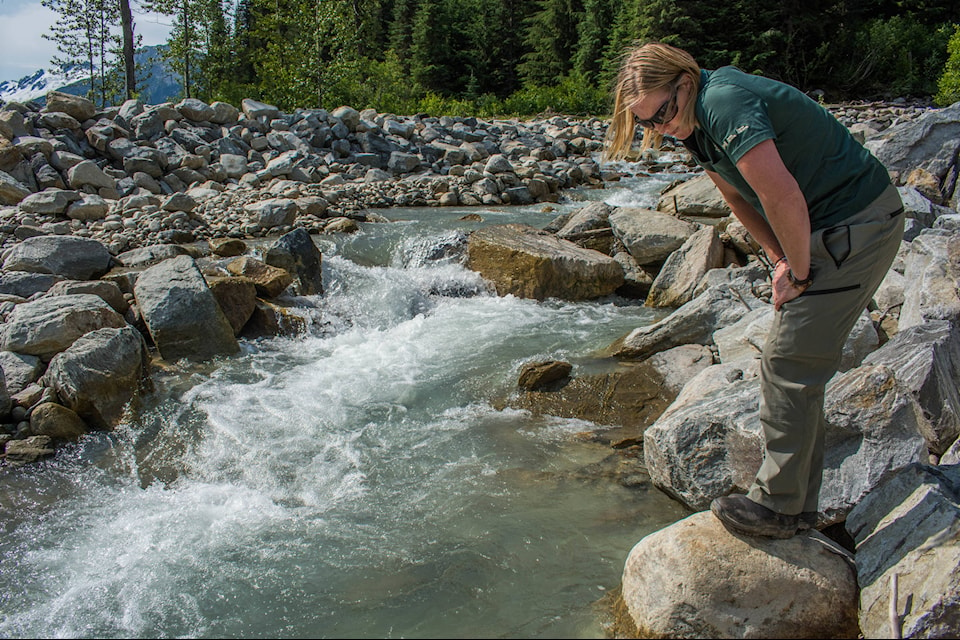When Highway 1 was built over Rogers Pass 57 years ago, the watershed was changed.
Creeks that once flowed unfettered, were now funneled through slick metal culverts, making it impossible for fish to continue upstream and spawn.
“Fish are an indicator of habitat health,” said Shelley Bird, communications officer for Parks Canada in Glacier National
Park.
In 2014, the Government of Canada announced almost $3 billion to build and renew infrastructure in Canada’s national parks. Part of that funding is being spent to improve and reduce vehicle congestion on Highway 1 through Glacier National Park.
READ MORE: Upgrades coming to Highway 1 between Glacier National Park and Golden
Since the highway is under construction, it’s allowing Parks Canada to make ecological changes, such as building fish-friendly culverts.
The culvert on Connaught Creek, near Rogers Pass Discovery Centre, was identified as a priority. Before the construction of the highway, bull trout would spawn in gravel flats, which are roughly seven kilometers upstream.
| The old creek bed and culvert still remain as water seeps from the forest. Blackman said it's good habitat for salamanders. (Liam Harrap/Revelstoke Review) |
The old culvert underneath Highway 1 was narrow and had a metal bottom, which channeled the water into a fast current - too fast for fish to swim against. Also, the old culvert ended with a high waterspout which did not allow fish to pass.
“Bull trout need pools for resting and a mix of fast and slow water, which is good for bugs. And the bugs feed the fish,” said Danielle Backman, impact assessment scientist for Glacier National Park.
It’s a delicate cycle.
Regardless, making the creek suitable for bull trout again required hard work, such as creating pools and planting willows, which shade the water. The vegetation eventually drops leaves, providing nutrients downstream.
“It’s not easy to build a creek,” Backman said.
Bull trout are the primary fish species in the Rogers Pass area. While they are not a species at risk in Glacier National Park, they are threatened in areas of Canada due to poaching and encroachment of non-native species like Brook trout.
“We want to maintain habitat to not put them on the path to at risk,” Bird said.
READ MORE: To fish or not to fish: proposal to re-open Revelstoke Reach to angling
The new culvert that was built-in 2017, is wider and has a ground bottom.
Last summer, Parks Canada confirmed that bull trout were using it.
“For the first time in 57 years,” Bird said.
| Bull trout. (File) |
“Water is important, regardless if it has fish in it,” said Backman.
The creeks provide habitat for insects, birds, mosses and plants.
Without the large federal infrastructure investment, Backman said, projects like this would not exist. She continued that the investment provided us with opportunities and was a way to merge engineering and ecological integrity.
“It’s a win-win.”
She said that many Canadians think the funding was just for roads and buildings, but it allowed Parks Canada to construct infrastructure that was not as disruptive as before.
“People drive along the highway and don’t even know what’s happening underneath,” said Backman.
Bull trout do have one more obstacle before getting to the gravel flats - an old weir that was used for drinking water roughly 700 metres upstream from the highway. Parks is in the process of removing it.
“At the end of the day, the creek is better than it was and will get even more so,” Bird said.
@pointypeak701
liam.harrap@revelstokereview.com
Like us on Facebook and follow us on Twitter.
